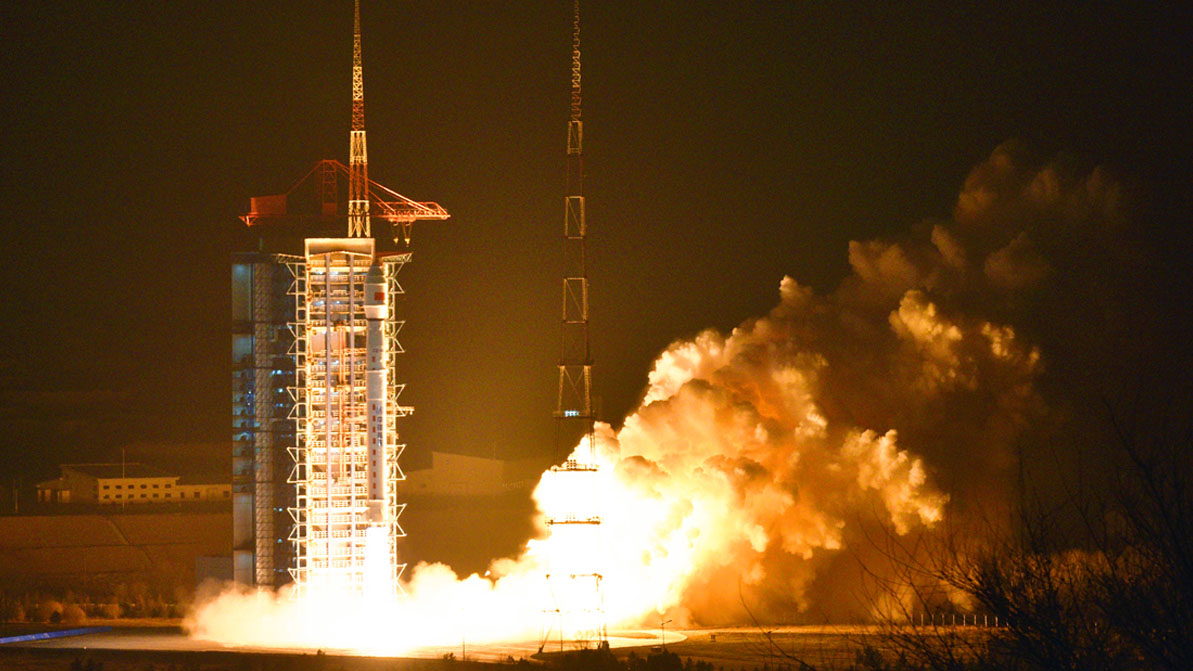China launched 2 rockets back-to-back just ahead of astronauts' landing
The double rocket launch set the stage for a successful Shenzhou 13 crew landing.
China launched two rockets from different spaceports in just six hours on Friday during a busy day that also included the successful landing of its longest astronaut mission yet.
The China National Space Administration launched the two missions starting on Friday (April 15), when a Long March 3B rocket lifted off from the Xichang Satellite Launch Center carrying the Zhongxing 6D communications satellites. Liftoff occurred at 8 p.m. Beijing time (8 a.m. EDT or 1200 GMT) from the launch site, which is based in China's southwestern Sichuan province.
"The Zhongxing 6D satellite is a special transmission satellite for radio and television programs developed by the Fifth Academy of China Aerospace Science and Technology Corporation," officials with the China Aerospace Science and Technology Corporation (CASC) said in a statement, according to a Google translation. The satellite will replace China's older China Star 6A satellite and will provide high-definition video, radio and television broadcast services across the South China Sea, southeast Asia and Pacific Island countries, CASC officials said.
Related: China's Long March rocket family: History and photos

Just over six hours later, at 2:16 p.m. EDT (1816 GMT or 2:16 a.m. on Saturday Beijing time), a Long March 4C rocket launched a new atmosphere monitoring satellite into orbit from the Taiyuan Satellite Launch Center.
The satellite uses a laser-based radar system, or lidar, and is designed to monitor local air quality to support "China's atmospheric environmental monitoring, global climate change research, crop yield estimation, and agricultural disaster monitoring," according to China's state-run Xinhua news service.

Both launches came on the eve of China's successful Shenzhou 13 astronaut landing, which returned three astronauts home from the country's Tiangong space station core module Tianhe. The landing, which occurred at 9:56 a.m. Saturday Beijing time (9:56 p.m. EDT on April 15 or 0356 GMT on April 16), ended a six-month mission to Tiangong for Shenzhou 13 astronauts Zhai Zhigang, Wang Yaping and Ye Guangfu.
Get the Space.com Newsletter
Breaking space news, the latest updates on rocket launches, skywatching events and more!
The astronauts spent 182 days aboard the Tiangong core module Tianhe on a mission that featured two spacewalks, including China's first by a female astronaut, as well as more than 20 science experiment programs and educational outreach.
Email Tariq Malik at tmalik@space.com or follow him @tariqjmalik. Follow us @Spacedotcom, Facebook and Instagram.
Join our Space Forums to keep talking space on the latest missions, night sky and more! And if you have a news tip, correction or comment, let us know at: community@space.com.

Tariq is the Editor-in-Chief of Space.com and joined the team in 2001, first as an intern and staff writer, and later as an editor. He covers human spaceflight, exploration and space science, as well as skywatching and entertainment. He became Space.com's Managing Editor in 2009 and Editor-in-Chief in 2019. Before joining Space.com, Tariq was a staff reporter for The Los Angeles Times covering education and city beats in La Habra, Fullerton and Huntington Beach. In October 2022, Tariq received the Harry Kolcum Award for excellence in space reporting from the National Space Club Florida Committee. He is also an Eagle Scout (yes, he has the Space Exploration merit badge) and went to Space Camp four times as a kid and a fifth time as an adult. He has journalism degrees from the University of Southern California and New York University. You can find Tariq at Space.com and as the co-host to the This Week In Space podcast with space historian Rod Pyle on the TWiT network. To see his latest project, you can follow Tariq on Twitter @tariqjmalik.









